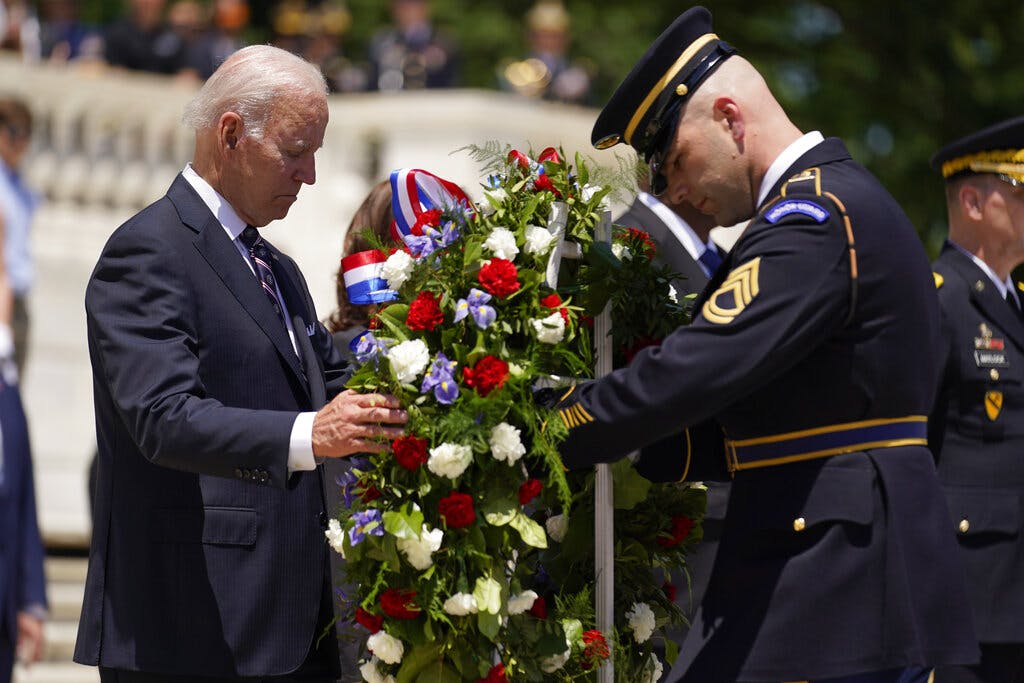Memorial Day’s Origins Offer Hope for Our Divided Nation
At the start of the 20th century, The New York Sun described a holiday with an optimistic spirit — as Americans felt the nation was advancing on the right track.

This Memorial Day, as we lament what divides us from our fellow Americans, we can find hope for the future in the past, when the tradition of decorating Confederate graves grew into a holiday honoring the union they fought to destroy.
Some commemorations of Memorial Day can be irreverent, reducing the war dead to an excuse for a three-day weekend kicking off summer. On the other extreme is a day of flags at half-staff, shuttered businesses, and public mourning in black crepe.
The turn-of-the-century New York Sun described a holiday with a more optimistic mission, at a time when majorities of Americans felt the nation was advancing on the right track — regardless of their color, gender, or economic standing — because even though much needed to be done, there was hope for brighter tomorrows.
“It is no longer a day of mourning,” the Sun wrote of Memorial Day 1900, “but a holiday to celebrate the integrity and the solidity of the American nation as one of the most masterful of the great powers of the world. Today, we are not weeping over death but are rejoicing in a new and larger national life.”
General John A. Logan, commander-in-chief of the Grand Army of the Republic, an organization of Union veterans, set those wheels in motion by declaring a federal Decoration Day on May 30, 1868 — a date the National Museum of the U.S. Army believes he chose because the flowers would be in bloom at Arlington.
The term “Memorial Day” first appeared in 1882, came to be preferred over “Decoration Day” after World War II, and in 1971 was fixed as the official name of the last Monday in May.
In generations past, wars required sacrifice from almost every family and town. Because our modern conflicts tend to have smaller numbers of casualties and are now fought by volunteer Armed Forces, it’s appropriate that citizens are in awe of the sacrifice made by those resting in military cemeteries.
These tributes, however, often neglect an aspect of the holiday that was common a century ago: celebrating the exceptional nation that our fallen died to preserve and recommitting ourselves to the national motto: E pluribus unum, “Out of Many, One.”
On May 30, 1899, the Sun described that kind of America. “This year,” the paper wrote, “Memorial Day seems, more than ever, a reminder of peace and brotherhood between the Blue and the Gray.” That confidence was born of economic prosperity and winning the war against Spain.
The key victory in Cuba came under the command of General Joseph “Fighting Joe” Wheeler. President McKinley, who had served for the duration in Union blue, chose the former Confederate to demonstrate that Americans once again marched under the Stars and Stripes alone.
The Sun wrote of 1899’s Memorial Day celebrations in the glow of such triumphs: “Today’s spectacle shows that a new generation is on the scene, to whom this is a gala occasion, bringing largely suggestions of rejoicing, and of union and peace.”
As the first war after vanquishing the secessionists, the Spanish conflict helped bind up the nation’s wounds, and Memorial Day grew into a national holiday from that moment onward, rather than a tradition handled by each state honoring its favorite sons alone.
In its editorial for Memorial Day 1900, the Sun again celebrated that the “bitterness of the Civil War” had receded. The holiday was now “a day of rejoicing over the restoration of the American union and, as such, it is likely to remain, as permanently established among American holidays as Independence Day itself.”
The men moldering in those decorated Confederate graves died for a cause General Ulysses S. Grant called “one of the worst for which a people ever fought,” but the tradition of honoring their sacrifice paved the way for the American Century because our ancestors refused to give in to division.
Here in 2022, we face the same forces seeking to divide us based on what’s different, rather than the noble heritage that unites us as Americans. Memorial Day is an opportunity to redouble our commitment to those shared ideals — to live for America, as a tribute to those who died for it.

